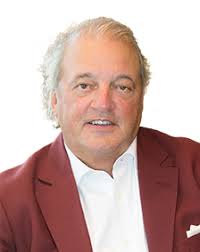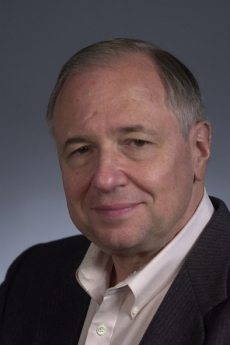S2E12 / Can We Sue Our Way Out of the Opioid Crisis? / David Courtwright, James Tierney, Joe Rice, John Banzhaf, Robert Rabin, Rosalie Pacula
Is anyone to blame for the opioid overdose epidemic? Should we be going after white-collar criminals like pharmaceutical company executives, distributors and doctors? What can we learn from the lawsuits against Big Tobacco? And will suing Big Pharma help get us out of this crisis?
Note: This season of American Diagnosis was originally published under the title In Sickness & In Health.
This podcast was created by Just Human Productions. We’re powered and distributed by Simplecast. We’re supported, in part, by listeners like you.
Joe Rice: These companies have inappropriately marketed their products, inappropriately enticed doctors to prescribe their product for unintended uses.
Celine Gounder: That’s Joe Rice, a lawyer in Mount Pleasant, South Carolina. He’s been involved in some of the biggest civil litigation cases in the past 30 years, like Big Tobacco and the BP Deepwater Horizon oil spill.
Joe Rice: The result is a massive increase in the sale of the product beyond any reasonable, comprehendible volume of opioid pills being sold in communities with the result being… addictions, massive overdoses, massive opioid overdose-related deaths and massive health costs at the local level. … And that’s where we are right now… it’s our allegation… and we’ve got to prove it in court.
Celine Gounder: Welcome back to “In Sickness and in Health,” a podcast about health and social justice. I’m Dr. Celine Gounder. So far in this series, we’ve talked a lot about possible solutions to the opioid crisis — everything from criminal justice reform, to medications that stabilize people with addiction, to supervised injection sites. But, what are the origins of the opioid crisis? How did we get here, and is anyone to blame? Until now, we’ve most often laid the blame for the crisis and its downstream effects on the victims of the epidemic themselves — like drug users in rural communities or small-time corner drug dealers. But, what about pharmaceutical company executives or doctors — people who don’t fit our assumptions about who’s a criminal and who’s not? Well, now, lawyers across the country are teaming up to bring these white-collar criminals to justice.
Celine Gounder: Can we sue our way out of the opioid crisis? That’s this time on “In Sickness and in Health.”
Celine Gounder: So how did we get here in the first place? How did doctors and pharmaceutical companies help start the opioid overdose crisis? Aren’t these the exact people who are supposed to help us with our health problems, not create new ones? It’s a huge betrayal of the trust we place in the medical profession. But, it happened, and it’s not the first time in our history that painkillers prescribed by healthcare providers have gotten us into trouble.
Celine Gounder: In January of 1889, The British Journal of Psychiatry published a letter from a young woman to her doctor. The young woman wrote about taking a tincture of opium to cure her insomnia. After taking the medicine, she felt listless and became desperate for more doses — what we’d now call withdrawal. She even wrote that she’d become indifferent to housework — no small thing in those days! She concluded the letter by writing, “You doctors know all the harm those drugs do, as well as the ‘victims’ of them, and yet you do precious little to prevent it.” It’s a damning letter and one that could just have easily been written in the past 15 years. Turns out, this isn’t our first opioid epidemic. In the late 1800s and early 1900s, doctors had very few options for dealing with their patients’ pain or for that matter most medical conditions. Opiates were unregulated, and they were one of the only things doctors could prescribe to help patients feel better. So prescribe, they did. Narcotics, opium, even heroin were given to patients — for anything from a cough to menstrual cramps to diarrhea.
David Courtwright: The majority of narcotic addiction in the late 19th and the early 20th centuries was medical in character. It came about either because physicians had provided drugs like morphine to people who had chronic diseases, or because people were self medicating sometimes with patent medicines that contained opium and morphine. But probably 60 to 70 percent of the cases of addiction were essentially middle-aged, middle class women who had some kind of chronic painful disease.
Celine Gounder: That’s David Courtwright. You may remember him from our last episode about race and the drug war. He’s a professor of history at the University of North Florida, and he writes about the history of drug use and drug policy in the United States. Although medical addiction was rampant in the late 1800s and early 1900s, doctors and patients did start to pay attention to the addictive properties of opiates, and the harms they caused.
David Courtwright: Essentially what happened is that physicians became more circumspect in their prescribing practices by the early 20th century. I mean, they understood they had a problem. If you go back and you read the medical journals, you see that as early as the 1870s and 1880s, doctors were writing articles saying, you know, we’re prescribing too much of this. … progressive pharmacists were writing articles in their journals saying, we’ve really got to be careful about refills. We’ve got a problem here. And you can see that statistically. You can see that the number of prescriptions containing opiates went down in the early 20th century.
Celine Gounder: In 1906, after massive public outcry, Congress passed the Food and Drug Act. For the first time in our nation’s history, medications sold had to clearly list their ingredients. Drugs came under more scrutiny and were increasingly regulated.
David Courtwright: …by and large, the kind of old style opiate addict who’d gone to a doctor complaining of some chronic condition, who became addicted… that person was pretty rare by the, say the 50s and 60s.
Celine Gounder: David, who started studying drug use in the 1970s, thought medical addiction was a thing of the past — the stuff of history books. How could modern day doctors let this happen again? But the problem did reemerge, almost exactly, a century later.
David Courtwright: …one way to think about the return of medical opioid addiction in the 1990s is that we’d forgotten the lessons that we had learned in the late 19th and the early 20th century, and we’re relearning those lessons in the most painful way imaginable, right now.
Celine Gounder: Those experiences in the late 1800s and early 1900s led doctors to become a lot more conservative about prescribing opioids. They largely prescribed them for surgery, or for pain related to cancer, or other end-of-life conditions. But then, in the 1990s, ideas about pain were starting to shift. Patients demanded a more active role in medical decision-making. Doctors were urged to take their patients’ pain and suffering more seriously. And pharmaceutical companies like Purdue Pharma, Johnson & Johnson and Endo started aggressively marketing prescription opioids for chronic pain — like neck, back or joint pain. They spent hundreds of millions of dollars on aggressive marketing campaigns, and courted doctors, claiming that opioids were safe and effective drugs for pain, and, they massively understated how wildly addictive Oxycontin and other opioids could be.
Celine Gounder: Here’s a a promotional video that Purdue Pharma distributed to 15,000 doctors in 1998:
Susan: “You know, this medication does not turn me into a zombie. It has turned me into an active person again. All these pictures I look at myself. I look so heavy and so unhappy. And, and now, I look completely different. I feel different. Life is wonderful again. I’ve, I have found life again, and it’s worth living now, and I’m so grateful.”
Celine Gounder: Around the same time in the 1990s, the Food and Drug Administration relaxed its rules on direct-to-consumer pharmaceutical advertising — i.e. ads that specifically target the general public. Such advertising had been on the rise since the 1980s, but looser regulations triggered an exponential increase in TV ads for opioids and other drugs. These commercials made opioid use seem safe, effective and commonplace. And, they continue today.
“If you need an opioid to manage your chronic pain, you may be so constipated. It feels like everyone can go, except you. Tried many things? Still struggling to find relief? You may have opioid-induced constipation — OIC. It’s different and may need a different approach.”
David: …consumer advertising is part of this… so that, for example, one sees, even during football games, advertisements for remedies for opioid induced constipation… and, and I know that’s not an ad for an opioid per se, but it is a social message. It is an implicit message that, hey, you know, there’s this normal medication out there that sometimes has side-effects, and if you happen to be one of those people who has one of those side-effects, we’ve got this other pill for you that will help you out. And, it’s that kind of normalization that is, I think, conducive to an increasing problem in the population.
Celine Gounder: So, in the 1990s… Big Pharma was targeting doctors and patients, aggressively marketing their drugs for all manner of pain. Very quickly, there was a huge boom in prescription opioids like Oxycontin and Percocet, and almost overnight, hundreds of thousands of people found themselves dependent on these drugs. And misuse was common.
David Courtwright: So in the 90s and the early 2000s… As people began to acquire and experiment with and become dependent on drugs like OxyContin. They would tell their friends, look, I’ve got this new drug, it’s an Oxy 40, it’s an Oxy 80. It’s really good. You crush it. You sniff it. You can get really high. You can get some by going to your doctor. Tell them your back hurts. You can go, and you can get a supply of this drug.
Celine Gounder: By this point, prescriptions for opioids had really gotten out of hand. In 2013, doctors wrote so many prescriptions that every American adult could have had his or her own bottle of opioid painkillers. This was a sign that things had really gone off the rails, that these drugs were likely ending up on the blackmarket. But, that was just the first wave of the opioid crisis. As doctors started to wise up to the situation, prescription opioids became harder to get legally. Some people were cut off from their prescription drugs, while others sought a stronger high. Cheap heroin from Mexico started flooding into the country.
David Courtwright: And then in the early 2000s, there’s another shift: Mexican heroin, mostly Mexican heroin, that’s coming into the country. Many of the dealers are not simply taking it to the big cities, but they’re also starting to distribute the drug in small- to medium-sized cities, and even towns in the countryside. So essentially, in one word, the supply of opioids became nationalized in the late 20th and early 21st centuries in a way that it had not been nationalized in the mid 20th century.
Celine Gounder: Very quickly, opioids became all too prevalent in America, including rural communities. Overdoses were up, and it seemed like things couldn’t get any worse. But the situation did get worse. Over the last 5 years, heroin is increasingly laced with fentanyl. Fentanyl is up to 50 times more potent than heroin and now causes more overdose deaths than prescriptions opioids. So this isn’t just one epidemic. The opioid crisis has come in waves: first prescription opioids, then heroin, and now fentanyl. Each wave bigger than the last, building to the public health emergency we face today. And things threaten to get worse yet, before they get better. A whole host of people and conditions played a part in getting us to where we’re at now. The reasons and causes of the crisis get really tangled up, and it’s a complicated issue to parse out. So, what’s next? Some people think the solution could come through the courts.
Celine Gounder: In the past year, hundreds of cities, counties and tribes, and almost every state in the country — from New York to Texas to North Dakota — have sued the companies that make and distribute opioids. Over 400 of these claims have been consolidated under Judge Dan Polster, who’s based in Cleveland. The lawsuits accuse the drug companies of deceptively marketing opioids. They also argue that drug distributors ignored red flags that prescriptions painkillers were being diverted for illicit use. So, to summarize: they accuse the drug companies of using shady marketing practices and turning a blind eye to the fact that things were going very, very wrong. For many, the hope is that these cases will be settled in a giant tobacco-style settlement. Joe Rice, the lawyer who we heard from at the top of the episode, told me about the case against Big Tobacco.
Joe Rice: I think you’ve got to realize that when the tobacco litigation was started by a small group of attorney generals, they were, sort of, at their wits end as to what to do because it was recognized that there was a problem with health and tobacco in our country, but nothing had happened to try to address it at a national level. And it appeared to be nothing was going to happen in Congress. So they were forced with the situation where the states were incurring substantial cost to treat and care for persons that had cigarette-related illnesses at their own cost and the cost of their taxpayers.
Celine Gounder: In other words, the states bore the brunt of the health costs, while cigarette companies were making loads of money. And, tobacco companies knew they were selling a dangerous product, and yet, still intentionally misled people. Remember Joe Camel or the Marlboro Man? They made cigarettes seem fun, cool, even badass, when in fact, they were deadly. And the cigarette companies knew that all along. The Big Tobacco case was settled in 1998 with something called the Master Settlement agreement; basically a fancy way of saying one of the largest settlements in U.S. history, and perhaps even the world. 46 states, D.C. and the U.S. territories signed on to the tune of 246 billion dollars.
Joe Rice: …it called for payments over the next 20 plus years by the tobacco companies to the states for payment of tobacco-related expenditures based on projections of the past and the future. …. So what happened is the settlement was reached. There was a consensus about how to share it on a percentage basis throughout the country by all the states, and then the monies went to the states, into the state’s general fund. And there’s a whole host of purposes that the various states use the money for.
Celine Gounder: So the tobacco companies awarded the states money to compensate them– at least in some measure — for how much smoking-related illnesses had and would be costing them. But the settlement also changed how tobacco companies could market their products.
Joe Rice: There’s a limit, I mean, a significant number of limitations as to what the tobacco company can do in marketing their products. They can’t advertise in teen magazines. They can’t create, you know, events that promote the use of tobacco at events that are going to be attended by young adults. So there’s substantial limitations that you could not accomplish any other way except through a consensual agreement.
Celine Gounder: Although many consider the Big Tobacco settlement a big win, others think it a missed opportunity that lawyers and policymakers can learn from as they take on the pharmaceutical industry today.
James Tierney: So we succeeded in a lawsuit against the tobacco industry and getting money out of it, but then government dropped the ball. The politicians dropped the ball, got greedy, and the result was far less than we would have had in the initial agreement.
Celine Gounder: That’s James Tierney. He’s the former Attorney General of Maine and was a key strategist in the fight against tobacco companies. For James… the money received in the tobacco case was important… but how that money was or wasn’t used… was just as critical.
James Tierney: The tobacco industry wanted to give away money. And we wanted to talk health. We didn’t want to take any money unless we could be sure that that money went into cessation of smoking, which remains the number one health hazard, not just in the United States, but in the world. And that’s what we negotiated. After we negotiated that deal, that had a lot of money in it tied up for health, things fell apart. The anti-tobacco advocates from the left said that we hadn’t gotten enough money, and because of that, they killed the deal in Congress. And it all fell apart. And then there was a subsequent deal, and then in the subsequent deal in 1998 as opposed to 1997, we lost the ability to control this money would be used for health purposes, and as a result the legislatures and governors built roads with it, lowered taxes. Some of it went to health. But the vast majority of it did not.
Celine Gounder: A lot of the tobacco money ended up being treated, in effect, as general state revenue and used for a whole range of state needs, many of which had nothing to do with tobacco use. For James, if money won in the opioid lawsuits goes to the states and cities, that money must be used for health costs or treatments related to opioid abuse. It may seem obvious, but this is a key takeaway from the story with Big Tobacco.
James Tierney: Let’s say state X is currently spending 20 million dollars on opioid treatment. Clearly, way below what any state should spend. But hypothetically, 20 million dollars. If they get 20 million dollars from a settlement, you have to make sure that they… use this as new money for new treatment. And that they just don’t wink and nod and take that 20 million they’re already spending, spend it on something else, cut taxes, give it away, whatever they do, and use the new 20 million dollars to just to keep doing what they’re doing.
Celine Gounder: Though there are a lot of parallels between Big Tobacco and Big Pharma, the differences are significant.
James Tierney: We have two very different lawsuits. Tobacco, when used as directed, will kill you. That is not true of opioids. Opioids go through the hands of many, many people who have state licenses — physicians, dentists, pharmacists, pharmacists’ assistants — all have licenses in which to prescribe opioids. So we have a different set of legal theories, and the manufacturers of opioids have a whole series of legal defenses that are actually stronger than the defenses that the tobacco companies had. So this is a difficult case. This is not a lay down case where the governmental entities are suing the drug companies. That’s very important to mention here. This is not tobacco. Opioids are not inherently dangerous. They are certainly dangerous and addictive to many people for all the reasons that we know, but they’re not inherently so, and legally, that makes a substantial difference.
Celine Gounder: And of course, opioids were approved and regulated by the Food and Drug Administration. This could let the drug companies duck blame and pass the buck, pointing the finger at government regulators and prescribers. And what about doctors or pharmacies — what’s their role in all of this?
John Banzhaf: My name is John Banzhaf. I’m a professor of public interest law at the George Washington University Law School here in our nation’s capital, Washington D.C.
Celine Gounder: John was among the first to call for restrictions on smoking in airplanes in the 1970s. He also studies legal theory.
John Banzhaf: …in the case of cigarettes, they were advertising directly to the smoker. Whereas in the case of the opioids, the argument, at least, is that they’re not advertising to the unsophisticated smoker. They are promoting the drugs to the much more sophisticated intermediaries, who are the doctors. And so, if the doctors are not telling the patients about the risks, if the doctors are overprescribing, if the doctors are doing all of these things, it’s the fault of the mean, bad doctors, and not the fault of the very nice drug companies, who are simply trying to keep people out of pain.
Celine Gounder: For John, liability could take many forms in the opioid lawsuits. There are just so many different players involved: doctors, pharmacists, distributors, not just Big Pharma.
John Banzhaf: I remember a lawsuit many years ago where a woman was prescribed some kind of pill — I forget what kind for a mental problem — and it was supposed to be refilled, I think, once every three months, and then it would became every two months, and then once a month, and then almost once every two weeks. And then as a result of overtaking it, she of course suffered major medical problems. There’s no question that she was negligent, but the court also said that the pharmacy, the pharmacy should have noticed that and shouldn’t have allowed her to continue increasing the dosage. So pharmacies or doctors who failed to notice and fail to take appropriate action when people are overdosing — that also could be the basis of liability.
Celine Gounder: Some pharmacies have already changed their policies to minimize their liability and reduce the risk to consumers. Walmart, for example, gives no more than 7 days worth of pills on new opioid prescriptions and only up to the equivalent of 50 mg of morphine per day. While doctors can keep prescribing within the limits of the law, and patients can keep doctor shopping, pharmacies can help act as a roadblock, curbing how many of these prescriptions actually get filled.
Robert Rabin: …presumably the costs… would be … a return to the states in terms of the damage recovery, which could be used in a variety of ways to combat the opioid epidemic.
Celine Gounder: That’s Robert Rabin… he’s a professor of law at Stanford, specializing in tort law and public health and safety regulation.
Robert Rabin: …even if there wasn’t a direct return in the cost of prescription drugs increasing, and that increase being passed on directly to the users of the end product, there still… are a variety of ways in which a cost recovery might be… a useful strategy for combating the opioid epidemic.
Celine Gounder: One of the ways in which the Big Tobacco settlement helped drive down smoking rates was by making smoking more expensive. The costs of the Big Tobacco settlement were passed on to consumers, driving up the price per pack, which helped discourage smoking. That’s not going to happen with opioids. Patients are going to keep paying the same co-pay for a prescription refill. It’s Medicaid, Medicare and insurance companies who’ll end up absorbing any price increases. But according to Robert, there are other ways in which a Big Pharma settlement could be used to turn the tide on opioid abuse and overdose.
Robert Rabin: That is, through better treatment facilities… for public health advertising and warnings to individuals about the risks associated with opioid use.
Celine Gounder: In other words, a Big Pharma settlement could be used to fund drug treatment and harm reduction programs like those we talked about earlier this season. Drug treatment remains all too scarce. Only about 10% of those who need it, get it, something I know all too well from fighting to get my patients the help they need. States and cities will need to be held accountable to invest any big settlement wins in the right way. Not frittering the money away on any number of other local priorities.
Robert Rabin: …it’s a question of the states being true to their sense of purpose and using those funds in ways that benefit the public health in the case of opioid use.
Celine Gounder: But, even with all these possible outcomes, like a Big Pharma settlement and big money pouring into states to help them deal with opioid addiction and overdoses, the fact is, this crisis doesn’t always start in the doctor’s office anymore. We’re in the second and third waves of the opioid epidemic — heroin and fentanyl — and the future is uncertain and hard to contain.
Rosalie Pacula: I can tell you that’s not likely to be Oxycontin that’s the problem the next five years. We don’t know what the next thing is going to be in the next five years. It might be the fentanyl, carfentanil on the black market, it might be a brand new synthetic that gets produced and sold as bath salts. Synthetic marijuana, as an example. So we need to… think holistically about ways in which these products get to the consumer through the healthcare system and outside the health care system, ecause not all of them come through the healthcare system.
Celine Gounder: That’s Rosalie Pacula. She’s a senior economist and the co-director of RAND’s Drug Policy Research Center. The opioid overdose crisis is a clear signal that we’ve got to rethink how drugs, not just opioids, are marketed to doctors and patients, fully knowing hat often the drugs that are successfully marketed to doctors have the potential of ending up on the blackmarket.
Rosalie Pacula: The doctors have way more information than the patient does. So when you’re marketing to doctors, you are marketing to your your potential patients. They are very much one and the same. So, restrictions in that regard on products that are have high addiction potential… yeah that seems like a really wise thing to do and something that we were supposed to already have in place in that system. We didn’t. Which is why we now have lawsuits and problems.
Celine Gounder: For Rosalie, the Big Pharma lawsuits are important, especially the marketing to doctors bit. But, we shouldn’t lose sight that suing the drug companies is just one piece of a really massive, convoluted problem. The lawsuits won’t address the second and third waves of the opioid epidemic: heroin, and now, fentanyl. Like a lot of solutions to this epidemic, a potential lawsuit win, is a small battle won in a much bigger war.
Celine Gounder: The lawsuits against Big Tobacco and the master settlement agreement had a big impact. The cost per pack went up, making smoking more expensive. Many forms of tobacco advertising were banned. And the lawsuits revealed to the public just how much the tobacco companies knew about the harms of smoking and what little regard they had for the health of their consumers. There are some parallels between Big Tobacco and Big Pharma, but it’s not a perfect analogy. It’s important to hold responsible those who fueled opioid abuse while profiting from it, but it’s also important to understand the limits of this strategy. It won’t have much of an impact on where we are now unless monies won from Big Pharma are invested in drug treatment and harm reduction, and we institute measures to rein in misleading and dangerous marketing practices.
Celine Gounder: In our final episode of the season, we’re going to talk about the way we think about drug use: whether it’s immoral, whether there’s a role for blame or shame, how people should be held accountable for their actions, and how spirituality and faith can help or hurt those suffering with addiction. That’s next time on “In Sickness and in Health.”
Celine Gounder: Today’s episode of “In Sickness and in Health” was produced by Nora Ritchie and me. Our theme music is by Allan Vest. You can learn more about this podcast and how to engage with us on social media at insicknessandinhealthpodcast.com, that’s insicknessandinhealthpodcast.com. If you like what you hear, please leave us a review on Apple Podcasts. It helps more people find out about the show! If you or a loved one needs help, you can reach out anonymously and confidentially to SAMHSA’s National Helpline at 1-800-662-HELP, that’s 800-662-4357. SAMHSA stands for Substance Abuse and Mental Health Services Administration. You can also find information online at www.findtreatment.samhsa.gov, that’s www.findtreatment.samhsa.gov. I’m Dr. Celine Gounder. This is “In Sickness and in Health.”
Guests
 David Courtwright
David Courtwright
 James Tierney
James Tierney
 Joe Rice
Joe Rice
 Robert Rabin
Robert Rabin






